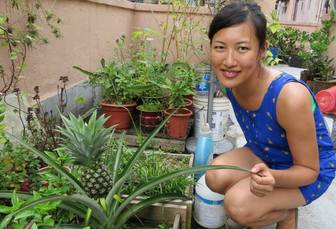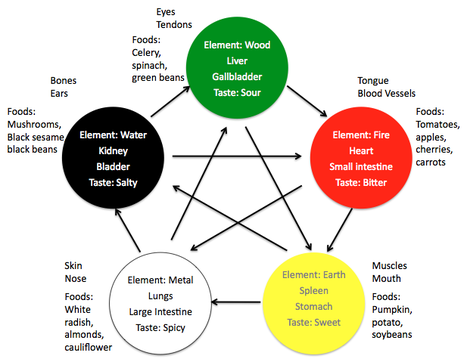|
|
Back to Blog
Doctors and diet books expound the polychromatic diet. But did you know that the idea has been in existence for more than 2,000 years? Following the colours of your food to eat healthily is simple, and it is not a novel concept. The naturally occurring colours in fruits and vegetables are unique signatures of specific health benefits for different foods. According to the “Yellow Emperor's Inner Classic” (黃帝內經) - the earliest and most comprehensive written work of Traditional Chinese Medicine (TCM) dating back to 2200 years ago, the five elements - wood, fire, earth, metal and water - are the root of all existence, and each element corresponds to the colours green, red, yellow, white and black, respectively. Consuming the foods of a particular colour can replenish, regenerate and restore the natural, healthy state of matching organs and body parts (See diagram below). Each colour also corresponds to a different flavour, and it is said that cravings for a particular flavour could indicate whether an organ is at less than optimal condition. Skeptics who find this concept abstract can find corresponding explanations of how different coloured foods benefit health in Western science. Distinctive colours occur in fruits vegetables due to the prescence of different phytochemicals. Phytochemicals are generally associated with having high antioxidative and anticarcinogenic (anti-cancer) properties Another parallel with TCM can be drawn... According to an article published in 2009 in "Clinics in Dermatology,” dark leafy green vegetables contain high levels of Lutein, which may lower your risk for eye conditions, including cataracts. Remarkably, this finding corresponds with the TCM theory that eating green colour foods can benefit the eyes. Another parallel with TCM can be seen where the fire element and the colour red is associated with heart health. Studies have found that quecertin, a flavonoid (a sub-class of phytochemicals) that contribute to the red colour in apples, dark cherries and red wines may help reduce inflammation and the build up of LDL (low density liproproteins or “bad") cholesterol in arteries, consequently reducing the risk of atherosclerosis, which can lead to heart attack or stroke. Quercetin has been shown to reduce LDL concentrations in overweight subjects at high risk of heart disease. The different coloured fruits and vegeables pictured above are just a few examples of those you can choose from. While foods of each colour have their specific benefits, they work best in synergy with each other. Therefore it is advisable to have as many colours on your plate for a healthy, balanced diet. For some fun, creative inspiration on eating foods of different colours, check out the work of French conceptual artist Sophie Calle 1997 project “The chromatic diet,” where she created colour coordinated meals for different days of the week for a fictitious character in Paul Auster’s 1992 novel ''Leviathan.'  Alexandra Tung at a community urban rooftop farm in Yau Ma Tei. Alexandra Tung at a community urban rooftop farm in Yau Ma Tei. This article was contributed by Alexandra Tung, RD. Alexandra Tung is a food and nutrition expert who holds a Master's of Science degree in Nutrition with a focus on Agriculture, Food and Environment. She has worked with community clinics, NGOs, hospitals and restaurants, and researched and edited for publications on food policy and sustainable agriculture. She is currently based in Hong Kong, working on projects related to food, heath, nutrition education and urban agriculture. Most recently, she worked with the organization Wknd Farmer's Club to plan a colour-themed dinner where she spoke to participants about the benefits of eating different coloured foods.
0 Comments
Read More
Leave a Reply. |
